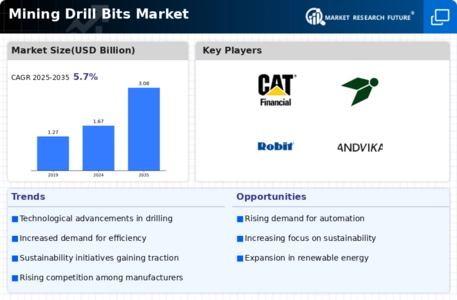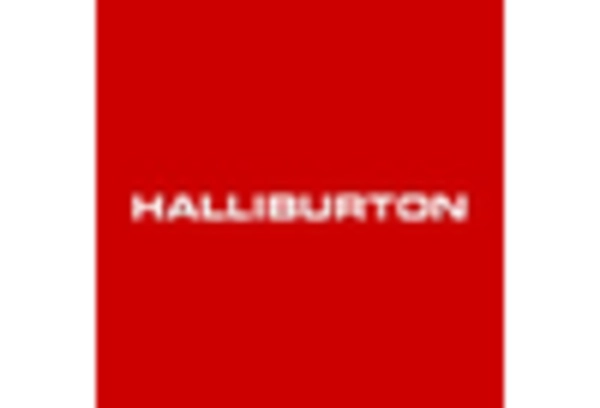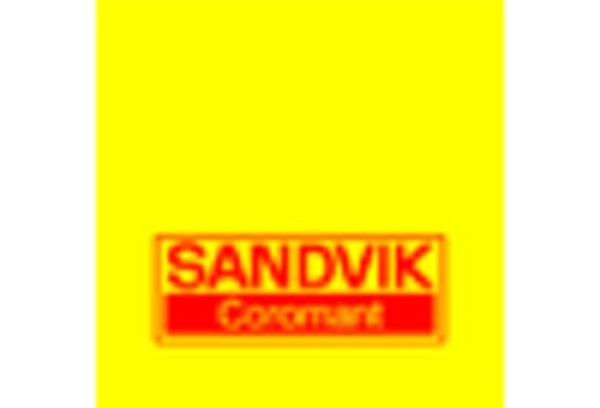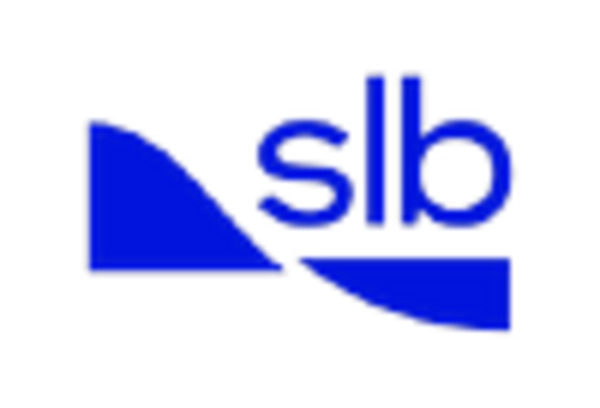-
EXECUTIVE SUMMARY
-
MARKET INTRODUCTION
-
Definition
-
Scope of the Study
- Research Objective
- Assumptions
- Limitations
-
RESEARCH METHODOLOGY
-
Overview
-
Data Mining
-
Secondary Research
-
Primary Research
- Primary Interviews
- Breakdown of Primary Respondents
-
and Information Gathering Process
-
Forecasting Modality
-
Market Size Estimation
- Bottom-Up Approach
- Top-Down Approach
-
Data Triangulation
-
Validation
-
MARKET DYNAMICS
-
Overview
-
Drivers
-
Restraints
-
Opportunities
-
MARKET FACTOR ANALYSIS
-
Value Chain Analysis
-
Porter’s Five Forces Analysis
- Bargaining Power
- Threat of New Entrants
- Threat of Substitutes
- Intensity of Rivalry
-
of Suppliers
-
5.2.2.
-
Bargaining Power of Buyers
-
COVID-19 Impact Analysis
- Market Impact Analysis
- Regional Impact
- Opportunity and
-
Threat Analysis
-
6.
-
GLOBAL WINDOWS AND DOORS MARKET, BY PRODUCT
-
Overview
-
Doors
-
Windows
-
GLOBAL WINDOWS AND DOORS MARKET, BY APPLICATION
-
Overview
-
Swinging
-
Sliding
-
Folding
-
Revolving
-
Others
-
GLOBAL WINDOWS AND
-
DOORS MARKET, BY END USER
-
Overview
-
Residential
-
Non-residential
-
GLOBAL WINDOWS AND DOORS MARKET, BY MATERIAL
-
Overview
-
Wood
-
Metal
-
Plastic
-
GLOBAL WINDOWS AND DOORS MARKET, BY REGION
-
Overview
-
North America
- U.S.
- Canada
-
Europe
- Germany
- France
- U.K
- Italy
- Spain
- Rest of Europe
-
Asia-Pacific
- China
- India
- Japan
- South Korea
- Australia
- Rest of Asia-Pacific
-
Rest of the World
- Middle East
- Africa
- Latin America
-
COMPETITIVE LANDSCAPE
-
Overview
-
Competitive Analysis
-
Market Share Analysis
-
Major Growth Strategy
-
in the Global Windows and doors Market,
-
Competitive Benchmarking
-
Leading Players in Terms of Number of Developments
-
in the Global Windows and doors Market,
-
Key developments and Growth Strategies
- New Product Launch/Application
- Joint Ventures
-
End User
-
11.7.2.
-
Merger & Acquisitions
-
Major Players Financial Matrix
- Sales & Operating
-
Income, 2022
-
11.8.2.
-
Major Players R&D Expenditure. 2022
-
COMPANY PROFILES
-
SANWA HOLDINGS CORPORATION (HORTON AUTOMATICS
- Company Overview
- Financial Overview
- Product s Offered
- Key Developments
- SWOT Analysis
- Key Strategies
-
INC,)
-
12.1.1.
-
Company Overview
-
12.1.2.
-
Financial Overview
-
12.1.3.
-
Product s Offered
-
12.1.4.
-
Key Developments
-
12.1.5.
-
SWOT Analysis
-
12.1.6.
-
Key Strategies
-
12.2.
-
YKK Corporation
-
12.2.1.
-
Company Overview
-
12.2.2.
-
Financial Overview
-
12.2.3.
-
Product s Offered
-
12.2.4.
-
Key Developments
-
12.2.5.
-
SWOT Analysis
-
12.2.6.
-
Key Strategies
-
12.3.
-
JELD-WEN HOLDING, INC.
-
12.3.1.
-
Company Overview
-
12.3.2.
-
Financial Overview
-
12.3.3.
-
Product s Offered
-
12.3.4.
-
Key Developments
-
12.3.5.
-
SWOT Analysis
-
12.3.6.
-
Key Strategies
-
12.4.
-
Marvin
-
12.4.1.
-
Company Overview
-
12.4.2.
-
Financial Overview
-
12.4.3.
-
Product s Offered
-
12.4.4.
-
Key Developments
-
12.4.5.
-
SWOT Analysis
-
12.4.6.
-
Key Strategies
-
12.5.
-
MI Windows and Doors, LLC..
-
DCM SHRIRAM LTD. (FENESTA BUILDING SYSTEM)S.
- Company Overview
- Financial Overview
- Product s Offered
- Key Developments
- SWOT Analysis
- Key Strategies
-
Pella Corporation
- Company Overview
- Financial Overview
- Product s Offered
- Key Developments
- SWOT Analysis
- Key Strategies
-
LIXIL Corporation.
- Company Overview
- Financial Overview
- Product s Offered
- Key Developments
- SWOT Analysis
- Key Strategies
-
Cornerstone Building
- Company Overview
- Financial Overview
- Product s Offered
- Key Developments
- SWOT Analysis
- Key Strategies
-
Brands, Inc. (Atrium Corporation).
-
Andersen Corporation.
- Company Overview
- Financial Overview
- Product s Offered
- Key Developments
- SWOT Analysis
- Key Strategies
-
APPENDIX
-
References
-
Related Reports
-
-
LIST OF TABLES
-
GLOBAL WINDOWS AND DOORS MARKET, SYNOPSIS, 2025
-
- 2034
-
TABLE
-
GLOBAL WINDOWS AND DOORS MARKET, ESTIMATES & FORECAST, 2025 - 2034 (USD BILLION)
-
GLOBAL WINDOWS
-
AND DOORS MARKET, BY PRODUCT , 2025 - 2034 (USD BILLION)
-
GLOBAL WINDOWS AND DOORS MARKET, BY APPLICATION,
-
GLOBAL WINDOWS AND DOORS MARKET, BY END USER, 2025 - 2034 (USD
-
BILLION)
-
TABLE
-
GLOBAL WINDOWS AND DOORS MARKET, BY MATERIAL , 2025 - 2034 (USD BILLION)
-
NORTH AMERICA
-
WINDOWS AND DOORS MARKET, BY PRODUCT , 2025 - 2034 (USD BILLION)
-
NORTH AMERICA WINDOWS
-
AND DOORS MARKET, BY APPLICATION, 2025 - 2034 (USD BILLION)
-
NORTH AMERICA WINDOWS AND DOORS MARKET, BY
-
END USER, 2025 - 2034 (USD BILLION)
-
NORTH AMERICA WINDOWS AND DOORS MARKET, BY MATERIAL
-
, 2025 - 2034 (USD BILLION)
-
NORTH AMERICA WINDOWS AND DOORS MARKET, BY COUNTRY, 2025 -
-
TABLE
-
U.S. WINDOWS AND DOORS MARKET, BY PRODUCT , 2025 - 2034 (USD BILLION)
-
U.S. WINDOWS
-
AND DOORS MARKET, BY APPLICATION, 2025 - 2034 (USD BILLION)
-
U.S. WINDOWS AND DOORS MARKET, BY END USER,
-
U.S. WINDOWS AND DOORS MARKET, BY MATERIAL , 2025 - 2034 (USD
-
BILLION)
-
TABLE
-
CANADA WINDOWS AND DOORS MARKET, BY PRODUCT , 2025 - 2034 (USD BILLION)
-
CANADA WINDOWS
-
AND DOORS MARKET, BY APPLICATION, 2025 - 2034 (USD BILLION)
-
CANADA WINDOWS AND DOORS MARKET, BY END
-
USER, 2025 - 2034 (USD BILLION)
-
CANADA WINDOWS AND DOORS MARKET, BY MATERIAL , 2025 - 2034
-
(USD BILLION)
-
TABLE
-
EUROPE WINDOWS AND DOORS MARKET, BY PRODUCT , 2025 - 2034 (USD BILLION)
-
EUROPE WINDOWS
-
AND DOORS MARKET, BY APPLICATION, 2025 - 2034 (USD BILLION)
-
EUROPE WINDOWS AND DOORS MARKET, BY END
-
USER, 2025 - 2034 (USD BILLION)
-
EUROPE WINDOWS AND DOORS MARKET, BY MATERIAL , 2025 - 2034
-
(USD BILLION)
-
TABLE
-
EUROPE WINDOWS AND DOORS MARKET, BY COUNTRY, 2025 - 2034 (USD BILLION)
-
GERMANY WINDOWS
-
AND DOORS MARKET, BY PRODUCT , 2025 - 2034 (USD BILLION)
-
GERMANY WINDOWS AND DOORS MARKET, BY APPLICATION,
-
GERMANY WINDOWS AND DOORS MARKET, BY END USER, 2025 - 2034
-
(USD BILLION)
-
TABLE
-
GERMANY WINDOWS AND DOORS MARKET, BY MATERIAL , 2025 - 2034 (USD BILLION)
-
FRANCE WINDOWS
-
AND DOORS MARKET, BY PRODUCT , 2025 - 2034 (USD BILLION)
-
FRANCE WINDOWS AND DOORS MARKET, BY APPLICATION,
-
FRANCE WINDOWS AND DOORS MARKET, BY END USER, 2025 - 2034
-
(USD BILLION)
-
TABLE
-
FRANCE WINDOWS AND DOORS MARKET, BY MATERIAL , 2025 - 2034 (USD BILLION)
-
ITALY WINDOWS
-
AND DOORS MARKET, BY PRODUCT , 2025 - 2034 (USD BILLION)
-
ITALY WINDOWS AND DOORS MARKET, BY APPLICATION,
-
ITALY WINDOWS AND DOORS MARKET, BY END USER, 2025 - 2034 (USD
-
BILLION)
-
TABLE
-
ITALY WINDOWS AND DOORS MARKET, BY MATERIAL , 2025 - 2034 (USD BILLION)
-
SPAIN WINDOWS
-
AND DOORS MARKET, BY PRODUCT , 2025 - 2034 (USD BILLION)
-
SPAIN WINDOWS AND DOORS MARKET, BY APPLICATION,
-
SPAIN WINDOWS AND DOORS MARKET, BY END USER, 2025 - 2034 (USD
-
BILLION)
-
TABLE
-
SPAIN WINDOWS AND DOORS MARKET, BY MATERIAL , 2025 - 2034 (USD BILLION)
-
U.K WINDOWS
-
AND DOORS MARKET, BY PRODUCT , 2025 - 2034 (USD BILLION)
-
U.K WINDOWS AND DOORS MARKET, BY APPLICATION,
-
U.K WINDOWS AND DOORS MARKET, BY END USER, 2025 - 2034 (USD
-
BILLION)
-
TABLE
-
U.K WINDOWS AND DOORS MARKET, BY MATERIAL , 2025 - 2034 (USD BILLION)
-
REST OF EUROPE
-
WINDOWS AND DOORS MARKET, BY PRODUCT , 2025 - 2034 (USD BILLION)
-
REST OF EUROPE WINDOWS
-
AND DOORS MARKET, BY APPLICATION, 2025 - 2034 (USD BILLION)
-
REST OF EUROPE WINDOWS AND DOORS MARKET,
-
BY END USER, 2025 - 2034 (USD BILLION)
-
REST OF EUROPE WINDOWS AND DOORS MARKET, BY MATERIAL
-
, 2025 - 2034 (USD BILLION)
-
ASIA PACIFIC WINDOWS AND DOORS MARKET, BY PRODUCT , 2025 -
-
TABLE
-
ASIA PACIFIC WINDOWS AND DOORS MARKET, BY APPLICATION, 2025 - 2034 (USD BILLION)
-
ASIA PACIFIC
-
WINDOWS AND DOORS MARKET, BY END USER, 2025 - 2034 (USD BILLION)
-
ASIA PACIFIC WINDOWS
-
AND DOORS MARKET, BY MATERIAL , 2025 - 2034 (USD BILLION)
-
ASIA PACIFIC WINDOWS AND DOORS MARKET, BY
-
COUNTRY, 2025 - 2034 (USD BILLION)
-
JAPAN WINDOWS AND DOORS MARKET, BY PRODUCT , 2025
-
- 2034 (USD BILLION)
-
TABLE
-
JAPAN WINDOWS AND DOORS MARKET, BY APPLICATION, 2025 - 2034 (USD BILLION)
-
JAPAN WINDOWS
-
AND DOORS MARKET, BY END USER, 2025 - 2034 (USD BILLION)
-
JAPAN WINDOWS AND DOORS MARKET, BY MATERIAL
-
, 2025 - 2034 (USD BILLION)
-
CHINA WINDOWS AND DOORS MARKET, BY PRODUCT , 2025 - 2034 (USD
-
BILLION)
-
TABLE
-
CHINA WINDOWS AND DOORS MARKET, BY APPLICATION, 2025 - 2034 (USD BILLION)
-
CHINA WINDOWS
-
AND DOORS MARKET, BY END USER, 2025 - 2034 (USD BILLION)
-
CHINA WINDOWS AND DOORS MARKET, BY MATERIAL
-
, 2025 - 2034 (USD BILLION)
-
INDIA WINDOWS AND DOORS MARKET, BY PRODUCT , 2025 - 2034 (USD
-
BILLION)
-
TABLE
-
INDIA WINDOWS AND DOORS MARKET, BY APPLICATION, 2025 - 2034 (USD BILLION)
-
INDIA WINDOWS
-
AND DOORS MARKET, BY END USER, 2025 - 2034 (USD BILLION)
-
INDIA WINDOWS AND DOORS MARKET, BY MATERIAL
-
, 2025 - 2034 (USD BILLION)
-
AUSTRALIA WINDOWS AND DOORS MARKET, BY PRODUCT , 2025 - 2034
-
(USD BILLION)
-
TABLE
-
AUSTRALIA WINDOWS AND DOORS MARKET, BY APPLICATION, 2025 - 2034 (USD BILLION)
-
AUSTRALIA WINDOWS
-
AND DOORS MARKET, BY END USER, 2025 - 2034 (USD BILLION)
-
AUSTRALIA WINDOWS AND DOORS MARKET, BY MATERIAL
-
, 2025 - 2034 (USD BILLION)
-
SOUTH KOREA WINDOWS AND DOORS MARKET, BY PRODUCT , 2025 -
-
TABLE
-
SOUTH KOREA WINDOWS AND DOORS MARKET, BY APPLICATION, 2025 - 2034 (USD BILLION)
-
SOUTH KOREA
-
WINDOWS AND DOORS MARKET, BY END USER, 2025 - 2034 (USD BILLION)
-
SOUTH KOREA WINDOWS
-
AND DOORS MARKET, BY MATERIAL , 2025 - 2034 (USD BILLION)
-
REST OF ASIA-PACIFIC WINDOWS AND DOORS MARKET,
-
BY PRODUCT , 2025 - 2034 (USD BILLION)
-
REST OF ASIA-PACIFIC WINDOWS AND DOORS MARKET,
-
BY APPLICATION, 2025 - 2034 (USD BILLION)
-
REST OF ASIA-PACIFIC WINDOWS AND DOORS MARKET,
-
BY END USER, 2025 - 2034 (USD BILLION)
-
REST OF ASIA-PACIFIC WINDOWS AND DOORS MARKET,
-
BY MATERIAL , 2025 - 2034 (USD BILLION)
-
REST OF WORLD WINDOWS AND DOORS MARKET, BY PRODUCT
-
, 2025 - 2034 (USD BILLION)
-
REST OF WORLD WINDOWS AND DOORS MARKET, BY APPLICATION, 2025
-
- 2034 (USD BILLION)
-
TABLE
-
REST OF WORLD WINDOWS AND DOORS MARKET, BY END USER, 2025 - 2034 (USD BILLION)
-
REST OF WORLD
-
WINDOWS AND DOORS MARKET, BY MATERIAL , 2025 - 2034 (USD BILLION)
-
REST OF WORLD WINDOWS
-
AND DOORS MARKET, BY COUNTRY, 2025 - 2034 (USD BILLION)
-
MIDDLE EAST WINDOWS AND DOORS MARKET, BY
-
PRODUCT , 2025 - 2034 (USD BILLION)
-
MIDDLE EAST WINDOWS AND DOORS MARKET, BY APPLICATION,
-
MIDDLE EAST WINDOWS AND DOORS MARKET, BY END USER, 2025 -
-
TABLE
-
MIDDLE EAST WINDOWS AND DOORS MARKET, BY MATERIAL , 2025 - 2034 (USD BILLION)
-
AFRICA WINDOWS
-
AND DOORS MARKET, BY PRODUCT , 2025 - 2034 (USD BILLION)
-
AFRICA WINDOWS AND DOORS MARKET, BY APPLICATION,
-
AFRICA WINDOWS AND DOORS MARKET, BY END USER, 2025 - 2034
-
(USD BILLION)
-
TABLE
-
AFRICA WINDOWS AND DOORS MARKET, BY MATERIAL , 2025 - 2034 (USD BILLION)
-
LATIN AMERICA
-
WINDOWS AND DOORS MARKET, BY PRODUCT , 2025 - 2034 (USD BILLION)
-
LATIN AMERICA WINDOWS
-
AND DOORS MARKET, BY APPLICATION, 2025 - 2034 (USD BILLION)
-
LATIN AMERICA WINDOWS AND DOORS MARKET,
-
BY END USER, 2025 - 2034 (USD BILLION)
-
LATIN AMERICA WINDOWS AND DOORS MARKET, BY MATERIAL
-
, 2025 - 2034 (USD BILLION)
-
-
LIST
-
OF FIGURES
-
FIGURE
-
RESEARCH PROCESS
-
FIGURE
-
MARKET STRUCTURE FOR THE GLOBAL WINDOWS AND DOORS MARKET
-
MARKET DYNAMICS FOR THE GLOBAL WINDOWS AND
-
DOORS MARKET
-
FIGURE
-
GLOBAL WINDOWS AND DOORS MARKET, SHARE (%), BY PRODUCT , 2022
-
GLOBAL WINDOWS AND DOORS
-
MARKET, SHARE (%), BY APPLICATION, 2022
-
GLOBAL WINDOWS AND DOORS MARKET, SHARE (%), BY
-
END USER, 2022
-
FIGURE
-
GLOBAL WINDOWS AND DOORS MARKET, SHARE (%), BY MATERIAL , 2022
-
GLOBAL WINDOWS AND DOORS
-
MARKET, SHARE (%), BY REGION, 2022
-
NORTH AMERICA: WINDOWS AND DOORS MARKET, SHARE
-
(%), BY REGION, 2022
-
FIGURE
-
EUROPE: WINDOWS AND DOORS MARKET, SHARE (%), BY REGION, 2022
-
ASIA-PACIFIC: WINDOWS
-
AND DOORS MARKET, SHARE (%), BY REGION, 2022
-
REST OF THE WORLD: WINDOWS AND DOORS MARKET,
-
SHARE (%), BY REGION, 2022
-
GLOBAL WINDOWS AND DOORS MARKET: COMPANY SHARE ANALYSIS,
-
FIGURE
-
SANWA HOLDINGS CORPORATION (HORTON AUTOMATICS INC,): FINANCIAL OVERVIEW SNAPSHOT
-
SANWA HOLDINGS
-
CORPORATION (HORTON AUTOMATICS INC,): SWOT ANALYSIS
-
YKK CORPORATION: FINANCIAL OVERVIEW SNAPSHOT
-
YKK CORPORATION:
-
SWOT ANALYSIS
-
FIGURE
-
JELD-WEN HOLDING, INC.: FINANCIAL OVERVIEW SNAPSHOT
-
JELD-WEN HOLDING, INC.: SWOT ANALYSIS
-
MARVIN: FINANCIAL
-
OVERVIEW SNAPSHOT
-
FIGURE
-
MARVIN: SWOT ANALYSIS
-
MI WINDOWS AND DOORS, LLC...: FINANCIAL OVERVIEW SNAPSHOT
-
MI WINDOWS
-
AND DOORS, LLC...: SWOT ANALYSIS
-
DCM SHRIRAM LTD. (FENESTA BUILDING SYSTEM)S.: FINANCIAL OVERVIEW
-
SNAPSHOT
-
FIGURE
-
DCM SHRIRAM LTD. (FENESTA BUILDING SYSTEM)S.: SWOT ANALYSIS
-
PELLA CORPORATION:
-
FINANCIAL OVERVIEW SNAPSHOT
-
PELLA CORPORATION: SWOT ANALYSIS
-
LIXIL CORPORATION.: FINANCIAL OVERVIEW
-
SNAPSHOT
-
FIGURE
-
LIXIL CORPORATION.: SWOT ANALYSIS
-
CORNERSTONE BUILDING BRANDS, INC. (ATRIUM CORPORATION).:
-
FINANCIAL OVERVIEW SNAPSHOT
-
CORNERSTONE BUILDING BRANDS, INC. (ATRIUM CORPORATION).:
-
SWOT ANALYSIS
-
FIGURE
-
ANDERSEN CORPORATION.: FINANCIAL OVERVIEW SNAPSHOT
-
ANDERSEN CORPORATION.: SWOT ANALYSIS









Leave a Comment